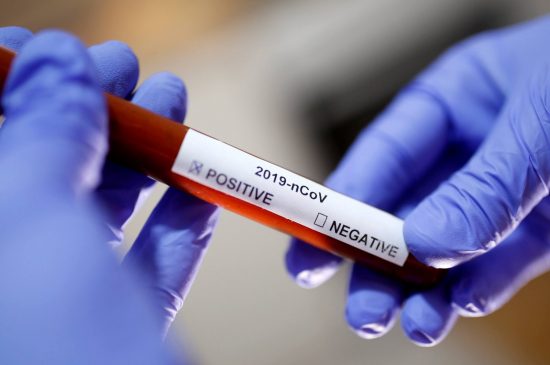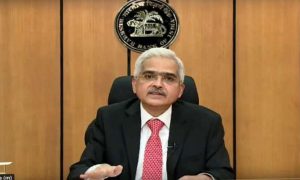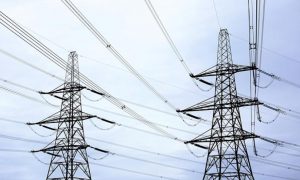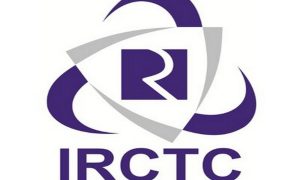Kerala also has a Covid-19 mortality rate of 0.5%, the best of any major state in the country, and significantly better than the national average of 1.3%.
Over the past few weeks, Kerala has defied the national trend of falling Covid-19 infections. But it’s the volume of the outbreak in the southern state that is worrying. As of Saturday night, the state has 165,011 active cases, accounting for 40% of all such cases in the country. In the past week, India has reported 40,459 new infections of Covid-19 every single day on average. Kerala alone has been responsible for around 19,528 of these daily new cases, or about 48% of the national tally. Only once before has any state been responsible for a larger share of the national infection count — Maharashtra, for a month-and-a-half period at the very start of India’s brutal second wave. The average weekly positivity rate — proportion of samples that return positive among total tested, generally indicative of the spread of the infection within the community — currently stands at 12.3% in Kerala, over five times that of the national average of 2.4% in the same period. There is no denying that the state is currently the biggest virus hot spot in the country. But Kerala has handled the outbreak far better than what purely looking at infection numbers in isolation appears to suggest right now. Here is why.

1) Kerala residents least exposed to virus
On Wednesday, the Union health ministry released state-wise data from its latest round of seroprevalence survey conducted between the last week of June and first week of July. It showed that at 44.4% detected seropositivity, Kerala had the lowest proportion of population exposed to Sars-CoV-2 in India. The national average was 67.6%. This, of course, includes the contribution of vaccination. This tell us two things. First, at the end of the second wave (when ICMR’s serosurvey was conducted), people in Kerala had been the least exposed to the virus in the country. The corollary of these findings is also that Kerala had the highest proportion of population (55.6%, compared to a national average of 32.4%) of any state in the country that still remained susceptible to the infection. Second, the findings give us a good idea of how well states worked on their testing. Placing the results of ICMR’s serosurvey along the total number of infections reported till the first week of July (when the survey concluded) shows that Kerala was, by a massive margin, the best state when it comes to identifying its on-the-ground infections. Till July 7, the state had reported a little over 3 million infections against the roughly 15.6 million people that had been exposed to the virus (if the findings are extrapolated on the state’s population). This paints a picture of the state’s testing strategy – Kerala was able to identify around 19% of all people exposed to the virus in the state. To put context to these, the national average for this detection rate is around 3%.

2) The state was not hit as badly during the peak of India’s second wave
During the peak of the second wave in the country, the health care system was exceedingly overburdened in a vast majority of the country’s populous regions. Through a three-four week period in May, a massive nationwide shortage of medical oxygen was dominating headlines. According to a database on deaths reported due to shortage of oxygen across the country maintained by Datameet, a citizen’s data collective based in Bengaluru which compiled such fatalities based on local news reports, there were at least 619 such deaths reported across India as of May 27, 2021. With 83 deaths due to shortage of oxygen, Goa had the highest number of such fatalities, followed by Andhra Pradesh and Madhya Pradesh, both with 65 such deaths. Of the 619 deaths in the country, not a single was reported from Kerala.]

3) Kerala has fared better in saving lives
The state also has a Covid-19 mortality rate of 0.5%, the best of any major state in the country, and significantly better than the national average of 1.3%. This isn’t surprising considering Kerala is, by a good margin, the country’s best ranked state in terms of health care system, according to NITI Aayog’s Health Index, 2020, which measures the annual performance of states and UTs on a variety of indicators such as health outcomes, governance and processes.

4) Better vaccination coverage than most
Till 9pm on Sunday, India’s vaccination drive has covered 27.9% of the country’s adult population on average with a single dose of the vaccine, while another 10.9% have been fully vaccinated, according to data from the health ministry’s CoWIN dashboard. In Kerala, this number is much higher – 30.7% of adults have been partially vaccinated and an impressive 22.8% of its eligible populations has been jabbed with both doses. In fact, a look at the country’s best population-wise administration of vaccine doses shows how far ahead the state is in terms of administering doses to its population. Among India’s 25 most populous regions, Kerala is on the third spot with 55 doses administered per 100 residents.





































